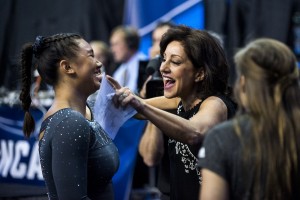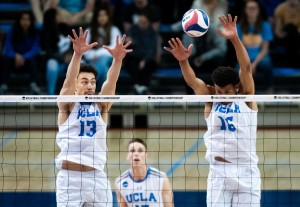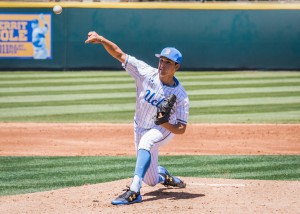A student group at UCLA helped create a new engineering course which will focus on a cryptocurrency technology called Blockchain.
The new course in the department of engineering was designed by Blockchain at UCLA, a student organization founded last year that offers events and discussions for students to explore blockchain technology. Blockchain is an encrypted way of storing a chain of transactional records that is publicly accessible and resistant to modification.
John Villasenor, a professor in electrical engineering, public policy and management, will teach the class, which is listed as Engineering 188 and will focus on blockchain programming.
Jason Huan, a co-founder of the club, and Andrew Battat, a second-year computer science student, will serve as teaching assistants.
“It’s going to be the first time the class is offered and we’re really excited to do it,” Huan said.
The class will be open to all engineering students who have taken Computer Science 31 and Computer Science 32.
Huan, a second-year computer science student who heads all technology projects for the club, co-founded Blockchain at UCLA last year along with students Andrew Musk, Adam Spar, Anthony Humay, Douglas Wong and Veronica Reynolds.
“I wanted to develop the ecosystem at UCLA because I think blockchain as a technology provides a lot of opportunities to students, and having a club would help grow that community here at UCLA” Huan said.
Musk, a third-year computer science student who heads consulting and communications for the club, said they founded the club because they felt students lacked opportunities to explore cryptocurrency.
“There wasn’t any formal space existing at UCLA at the time. A lot of other schools had existing clubs, majors or classes within the school but UCLA had nothing,” Musk said. “So we wanted to show UCLA students first what (blockchain) really is, and second what you can do with it.”
Huan said he hopes the club can continue increasing their membership in the upcoming year and help reach more students who share an interest in blockchain technology.
Huan highlighted his time as a leader of the club as one of his most rewarding experiences at UCLA.
“It sounds cheesy but the leadership experience Blockchain UCLA has given me is invaluable. It’s more in-depth than just telling people what to do,” Huan said. “It’s about executing tasks not just within your own ability but with a team.”
The club hosts multiple events each quarter including conferences, speakers and tech-talks open to anyone with an interest in blockchain technology. It hosted a 500-person conference in October that brought in speakers from the FBI, Microsoft and other big companies to discuss the applications of blockchain.
Huan said the conference was the club’s biggest achievement and that they are already planning another one for next year.
“Starting from a year ago, we had been building up to that moment and having that conference was a big milestone showing what we can achieve in the future,” Huan said.
Musk added that the engagement between students and professionals from major corporations and institutes that took place during the conference became one of his favorite parts of the club.
“People are just generally very open,” Musk said. “Last year there were people (at our cyber-day event) that were billionaires or had founded insane companies, but they were really open to speaking to undergrads about (blockchain) or presenting opportunities, which I feel like you don’t get everywhere.”
Blockchain at UCLA also provides an education series for students looking for an introduction to blockchain. The 10-week program offers weekly lectures for undergraduate and graduate students and informs students about the context and applications of blockchain.
Lulu Essoyan, a second-year cognitive science student participating in the series, said she joined the program to learn more about cryptocurrency in general. She attends a lecture each Tuesday where she eats pizza and learns about the basics of the technology.
Musk said he likes teaching students in the series about the different applications of blockchain.
“A lot of people hear about it and make assumptions without really knowing what goes behind it, so it’s cool showing them what more you can do with blockchain and bitcoin,” Musk said.
Musk said he hopes students will be able to learn about all the different opportunities that blockchain can offer through the club’s events and the new engineering course.









